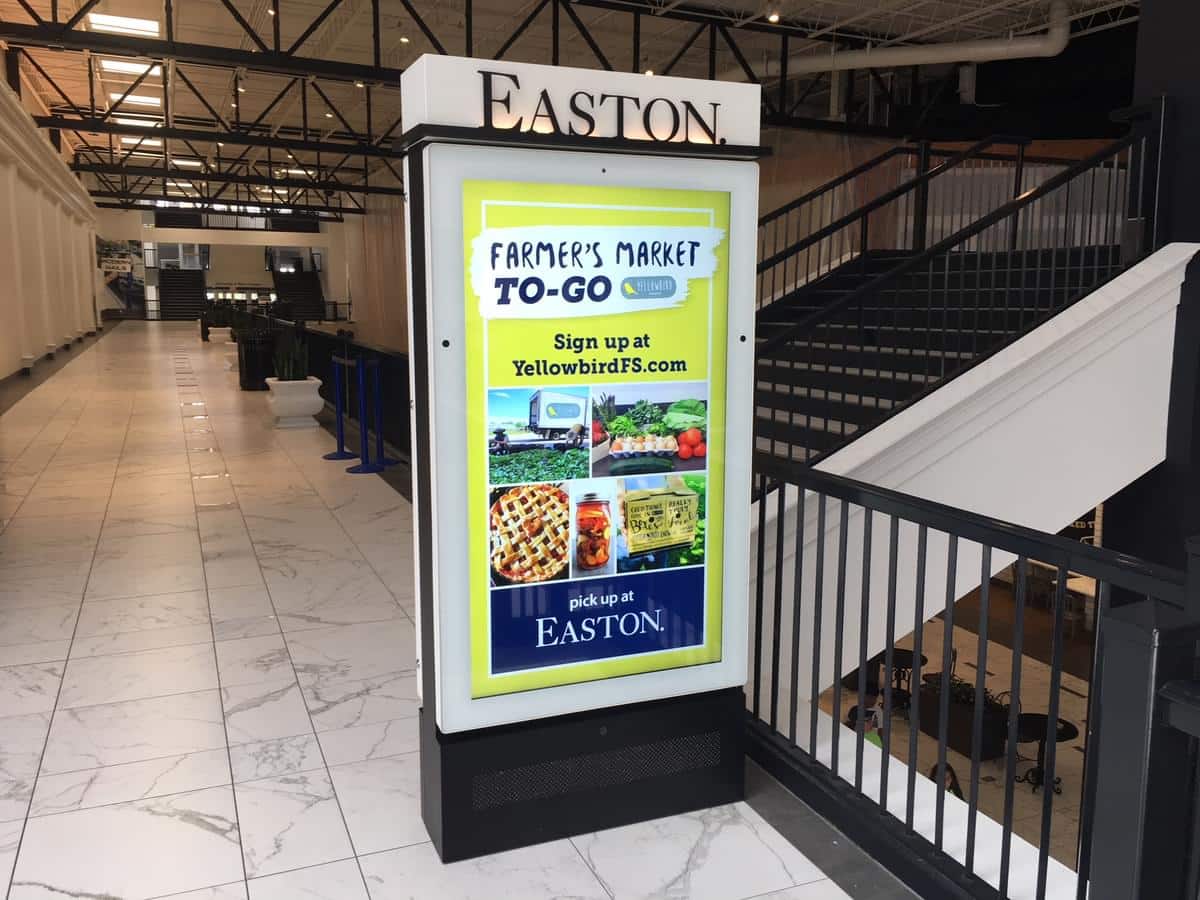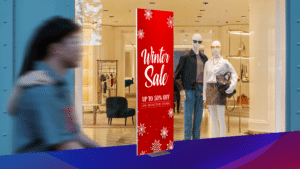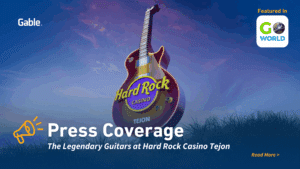The fourth in a seven-part series about in-store retail media networks by Gable.
Retail media networks (RMNs) are changing the game for CPG brands and grocers, offering a fresh way to connect with customers right when they’re most likely to buy. Within an RMN, interactive kiosks serve as dynamic digital touchpoints that engage shoppers, deliver immersive, personalized, and actionable experiences.
Convenience stores (C-Stores) have embraced some of these same features as well. They’ve incorporated gas pump toppers, canopies, and self-service kiosks to cut down on long lines and address labor shortages.
However, both types of retailers often want to know what type of software is needed to deliver these targeted advertising experiences to shoppers when they are ripe for the picking.
In this blog post, we’ll explore the primary software considerations and opportunities for CPG brands and retailers looking to maximize the impact of their RMN initiatives — specifically from their interactive kiosks.
Bridging the Gap Between Your Digital & Physical RMN Assets
By integrating with other RMN components, such as digital signage, data analytics, and content management systems, interactive kiosk software allows you to create cohesive, data-driven advertising experiences throughout the store.
Kiosks equipped with advanced software capabilities can:
- Display targeted product information and promotions based on shopper demographics, preferences, and purchase history.
Allow shoppers to interact with your content, explore product details, and access exclusive offers.
- Facilitate product comparisons, recipe suggestions, and other value-added services to enhance the shopper experience.
- Enable shoppers to make purchases directly from the kiosk, streamlining the path to conversion.
- Capture valuable data on shopper behavior, preferences, and engagement, which can be used to optimize RMN strategies and measure ROI.
Why a Top-Notch Content Management System (CMS) Matters
On average, a grocery store carries about 31,530 items, or Stock Keeping Units (SKUs), across 48,000 square feet, according to a recent industry report from Vertical IQ. With so much ground to cover, shoppers are missing the lion’s share of what’s in-store.
Although C-stores sell a limited selection of merchandise in high traffic locations, the majority in the US have a strong reliance on selling gasoline. What do weary travelers do while they’re filling up their tank? One look at a thirst-quenching drink or tasty hot dog on a strategically placed digital display brings them in-store.
Digital displays and interactive kiosks give brands a previously untapped platform to showcase their products, catch shoppers’ attention and enjoy added revenue lift. To effectively leverage this powerful hardware, you need a great content management system (CMS).
A CMS lets you easily create, update, and manage your retail media advertisements and promotional content across the RMN, ensuring your promotions are fresh and your branding is consistent across your RMN ecosystem.

Need help managing your interactive kiosk content?
Solutions consultants like Gable offer digital display content management and scheduling software for DIY updates or full-service packages for those who prefer a hands-off approach, ensuring your kiosk content is always up-to-date and impactful.
Interactive Kiosk Software Helps Harness the Power of Data Analytics
Data analytics is the backbone of successful RMN strategies. By collecting and analyzing data on shopper behavior, preferences, and purchase patterns, CPG brands and grocers can gain valuable insights into their target audience and optimize their RMN campaigns accordingly.
Here are some key ways in which kiosk software contributes to data analytics within RMNs:
- Data Collection: Interactive kiosks equipped with advanced software can collect a wealth of data on shopper behavior, preferences, and interactions. This data may include:
- Demographic information (e.g., age, gender)
- Product interactions (e.g., products viewed, time spent on each product page)
- Promotional engagement (e.g., offers clicked, coupons downloaded)
- Purchase behavior (e.g., products purchased, average order value)
- Feedback and survey responses

- Data Integration: Kiosk software can integrate with other RMN components, such as content management systems, customer relationship management (CRM) platforms, and point-of-sale (POS) systems. This integration provides a comprehensive view of shopper behavior across multiple touchpoints, providing a more complete picture of the customer journey.
- Real-time Analytics: Advanced kiosk software can process and analyze data in real-time, enabling RMN managers to monitor performance metrics, track shopper engagement, and identify emerging trends. This real-time insight allows for quick content optimization, promotions, and overall RMN strategies.
- Personalization: By leveraging data collected through kiosk interactions, RMN software can create detailed shopper profiles and segments. These profiles can be used to deliver personalized content, product recommendations, and promotional offers to individual shoppers, enhancing the RMN’s relevance and effectiveness.
- Predictive Analytics: Kiosk software can employ machine learning algorithms and predictive analytics to anticipate shopper needs, preferences, and future behaviors. By analyzing historical data and identifying patterns, RMN managers can make data-driven decisions about product placement, pricing, and promotional strategies.
- Performance Measurement: Kiosk software contributes to measuring RMN performance by tracking key metrics such as impressions, engagement rates, conversion rates, and revenue generated. This data allows CPG brands and retailers to assess the ROI of their RMN initiatives and make informed decisions about future investments.
For example, Gable provides data analytics & consumer insights by using optional software and hardware to evaluate kiosk performance. This includes user engagement, sales uplift, and dwell time to help you determine the ROI and continuously optimize kiosk programs for greater impact.
Navigating the Intersection of Personalization & Privacy
As mentioned above, personalization is critical to effective RMN campaigns. Today, software equipped with AI and machine learning makes this possible in real-time, improving the shopping experience and boosting sales. As technology continues to evolve, serving up the right information to the right person at the right time will become even more advanced. But as much as consumers value personalized content, they also value their privacy.
How do interactive kiosks handle data privacy concerns?
Kiosks can collect anonymous, aggregate data about users, such as traffic patterns, dwell times, and demographic trends (estimated age/gender) through integrated cameras and sensors. However, this data does not involve collecting or storing personally identifiable information or photographs.
For example, Gable only reports high-level analytics to help clients understand user behavior and optimize the experience over time. All data handling adheres to industry privacy standards and regulations.
From Aisles to Pumps, Gable Gives Stores a Lift
Choosing the right kiosk software to power your RMN might seem daunting, but it doesn’t have to be. Gable offers a comprehensive solution, including everything from kiosks and display hardware to the software platform and services that power the whole experience. A consultation with our experts can guide you through the process, ensuring your retail media strategy is both effective and user-friendly.
About Gable
Gable has been a leader in visual communications for over 40 years. We are passionate about elevating how people perceive, interact with, and remember brands, buildings, and places. With a rich legacy in blending the timeless artistry of traditional signs with the dynamic possibilities of video displays & integrated AV systems, Gable continues to shape the future of visual communications. For more information, visit gablecompany.com or call 800-854-0568.



